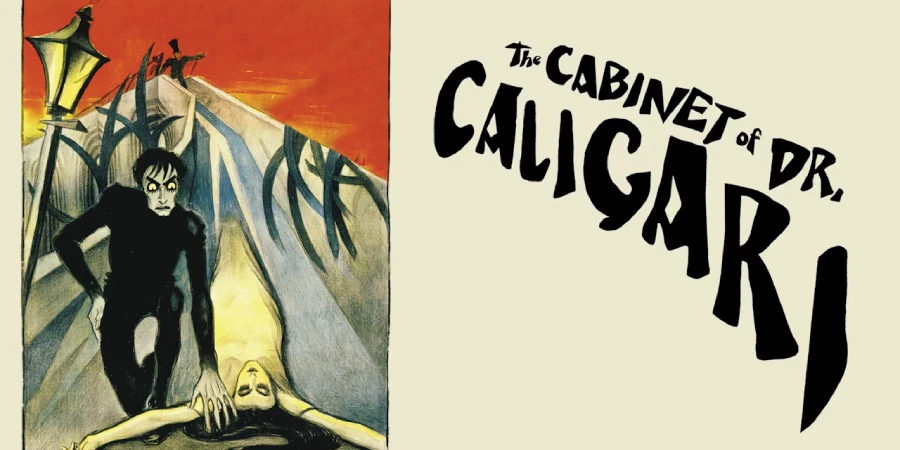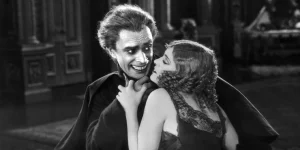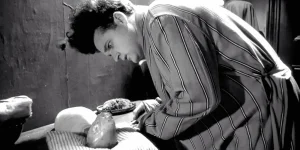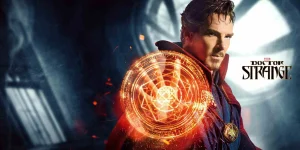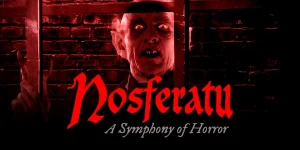Robert Wiene’s The Cabinet of Dr. Caligari (1920) is one of the most influential films in cinema history, often considered the first true horror movie and a landmark of German Expressionism. With its distorted sets, exaggerated shadows, and twisted narrative, the film feels like a fever dream come alive on screen. Let’s dive deep into its story, style, and impact.
Table of Contents
ToggleDetailed Summary
The Frame Story Begins
The film opens with Francis, the main narrator, recounting strange events in his town. He sits with another man and begins telling the tale of Dr. Caligari, setting up the story in flashback form.
The Carnival and Dr. Caligari’s Arrival
At a carnival in the small German town of Holstenwall, Dr. Caligari arrives with his sideshow attraction: Cesare, a somnambulist (sleepwalker) who has supposedly been asleep for 23 years. Caligari claims Cesare can predict the future of anyone who asks.
The Murders Begin
Shortly after Caligari arrives, mysterious murders take place in the town. Francis and his friend Alan both visit Cesare. Alan asks how long he will live, and Cesare ominously replies: “Until dawn.” True to his prediction, Alan is found murdered the next morning. Suspicion immediately falls on Cesare and Caligari.
Cesare’s Abduction Attempt
In one of the film’s most iconic sequences, Cesare attempts to kidnap Jane (Francis’s fiancée). He carries her across the distorted rooftops of the town but eventually collapses, overcome with exhaustion, and she is rescued. This is the breaking point for Francis, who becomes determined to uncover Caligari’s role in the crimes.
The Investigation
Francis follows Caligari’s movements and uncovers a sinister truth: Dr. Caligari is the director of a local asylum. Using his position of authority, he has been conducting experiments on Cesare, forcing him to commit murders while in a sleepwalking trance. Francis exposes Caligari, who is restrained by his own asylum staff and declared insane.
Movie Ending
Here comes the major twist. After Caligari is supposedly defeated, the film cuts back to the present-day asylum where Francis is telling his story. In a shocking reversal, we learn that Francis himself is a patient at the asylum. The people he described in his tale are actually fellow patients or staff members: Jane is delusional, Cesare is harmless, and Dr. Caligari is the asylum’s legitimate director.
The film ends ambiguously: Francis, in a fit of rage, tries to attack Caligari, claiming he is a madman controlling others. He is restrained by orderlies. Caligari, calm and collected, remarks that now that he understands Francis’s delusions, he may finally be able to cure him. This ending blurs the line between sanity and insanity, making the audience question whether Francis was ever telling the truth.
Are There Post-Credits Scenes?
No. As a silent-era film from 1920, The Cabinet of Dr. Caligari does not have post-credits scenes. The story ends with Francis in the asylum and Caligari seemingly in control.
Type of Movie
The film is a silent horror and psychological thriller with strong elements of German Expressionism. It’s also often cited as one of the earliest examples of the twist ending in cinema.
Cast
- Werner Krauss as Dr. Caligari
- Conrad Veidt as Cesare, the Somnambulist
- Friedrich Feher as Francis
- Lil Dagover as Jane
- Hans Heinrich von Twardowski as Alan
Film Music and Composer
Since the film was silent, no single official score exists. Different screenings featured different live music arrangements, usually piano or organ. In modern times, various composers have created new scores for the film, some using orchestras, others electronic soundscapes, to match the eerie visuals.
Filming Locations
The movie was filmed almost entirely in studio sets in Berlin, Germany. The painted backdrops, warped streets, and jagged buildings were intentional design choices to reflect the distorted, unstable mental state of its narrator. These sets became iconic, defining German Expressionist cinema.
Awards and Nominations
As a 1920 silent film, The Cabinet of Dr. Caligari did not receive modern-style awards. However, it has been retrospectively honored on numerous “greatest films of all time” lists and is frequently studied in film schools as a cornerstone of cinematic history.
Behind the Scenes Insights
- The bizarre, jagged set design was partly due to budget limitations—flat painted sets were cheaper than building realistic ones.
- Conrad Veidt (Cesare) suffered physically during the shoot because of the heavy makeup and uncomfortable costumes.
- Director Robert Wiene fought studio executives to keep the Expressionist set design, which they initially feared audiences would reject.
- The twist ending was allegedly suggested by producers, not Wiene, to make the film more commercially palatable.
Inspirations and References
The story was inspired by post-World War I Germany’s atmosphere of mistrust toward authority and institutions. Many critics interpret Dr. Caligari as a symbol of authoritarian power manipulating the masses. The film also drew heavily from German Expressionist art, with influences from painters like Ernst Ludwig Kirchner.
Alternate Endings and Deleted Scenes
The original script did not include the asylum framing story. In the original version, Caligari was unambiguously the villain. Producers insisted on the asylum twist, making Francis unreliable and shifting the film into psychological territory. This change is still debated by film historians as either diluting the social critique or enhancing the movie’s complexity.
Book Adaptations and Differences
The film is not based on a specific book but was instead written as an original screenplay by Carl Mayer and Hans Janowitz. However, later novelizations of the story exist, often sticking closer to the original draft without the asylum twist.
Memorable Scenes and Quotes
Key Scenes
- Cesare awakening in his coffin-like cabinet for the first time.
- Cesare predicting Alan’s death with chilling certainty.
- The rooftop chase scene with Jane in Cesare’s arms.
- The asylum reveal, where the world shifts and Francis’s story is revealed as possibly delusional.
Iconic Quotes
- “You will die at dawn.” – Cesare’s prophecy to Alan
- “At last I understand his mania. He believes me to be the mysterious Caligari. Now that I understand his delusion, I believe I know how to cure him.” – Dr. Caligari
Easter Eggs and Hidden Details
- The distorted sets visually mirror Francis’s unstable perception of reality.
- Notice how straight lines are almost entirely absent from the design—everything is tilted, jagged, and dreamlike.
- Cesare’s coffin-like cabinet is designed to look both like a carnival attraction and a prison, symbolizing his lack of freedom.
Trivia
- The film is often called the first “true” horror movie, though some earlier silent films experimented with horror themes.
- Conrad Veidt later appeared in Casablanca (1942), playing the villain Major Strasser.
- The design of Gotham City in Tim Burton’s Batman (1989) was directly influenced by Caligari’s Expressionist style.
Why Watch?
Because it’s more than just a horror film—it’s a surreal, nightmarish exploration of madness, authority, and perception. It’s a landmark in visual storytelling, filled with atmosphere and psychological depth. If you love film history, twisted narratives, or haunting imagery, this is essential viewing.
Director’s Other Movies
- Genuine: The Tragedy of a Vampire (1920)
- Raskolnikow (1923)
- The Hands of Orlac (1924)
- The Life and Loves of Tschaikovsky (1939)

